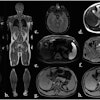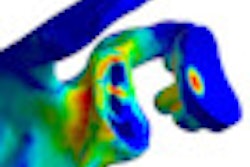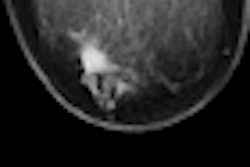
Delivering radiotherapy directly to cancer of the cervix using 3D imaging techniques is effective at controlling the return and spread of the disease. In most cases, hysterectomies may be avoided, according to research presented at the World Congress of Brachytherapy in Barcelona.
The use of 3D image-guided adaptive brachytherapy after a course of concomitant chemoradiation in 163 patients treated between 2004 and 2009 at the Institut Gustav Roussy in Villejuif, France, achieved results that were far superior to those from previous eras using different treatments. Not only was this combined treatment effective at controlling the tumor, but also it had more acceptable side effects.
 Dr. Renaud Mazeron.
Dr. Renaud Mazeron.
Of the 163 patients, 27% had stage I cervical cancer, 57% stage II, 12% stage III, and 3% stage IV. They received concomitant chemoradiation, followed by brachytherapy that was guided to the correct spot by either MRI (88%) or by CT (12%) examination.
Session presenter Dr. Renaud Mazeron, assistant professor of radiation oncology, reported that 61 of the women underwent a radical hysterectomy, but that residual cancer cells were identified in only 21% of these cases. He explained that the hysterectomies were conducted during a pivotal time period within the study time frame.
Forty-five patients, or 28% of the total, experienced cancer recurrence within three years of treatment. Seventy percent had distant metastases. After three years, disease-free survival was 73% and overall survival was 84%.
"Three-dimensional image-guided adaptive brachytherapy allows a much better adaptation of treatment to the target area, while preserving healthy organs at risk from radiation. Because we have accumulated significant positive experience, our surgeons have been convinced to abandon systematic surgery," he said. There are only a few cases each year when a hysterectomy is required after a patient has undergone the combined treatment at his hospital.
Mazeron noted that local control of a stage I tumor for patients currently being treated at the Institut Gustav Roussy is about 90%, and between 60%-87% for patents with stage II tumors.
An additional advantage of the brachytherapy treatment is that it costs less than intensity modulated radiation therapy (IMRT) treatments. This is important in developing countries where cervical cancer is the second most common cancer diagnosed in women after breast cancer.
Mazeron told attendees that there is no conclusive evidence with respect to whether cervical cancer patients should have a hysterectomy after the combined chemoradiotherapy and brachytherapy treatments. He reminded them that this was not a randomized clinical study, and that its results should be confirmed by other international studies.



















